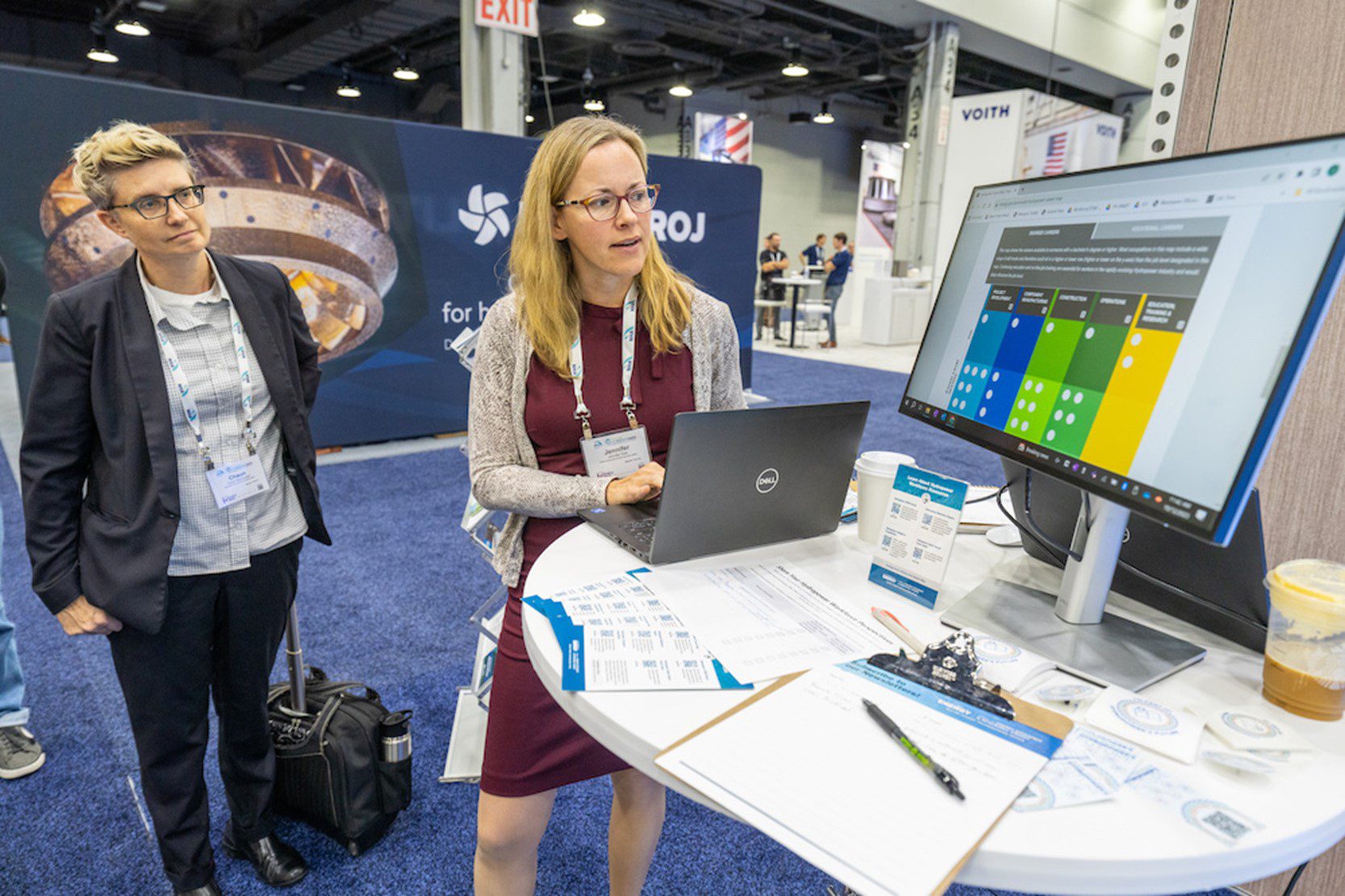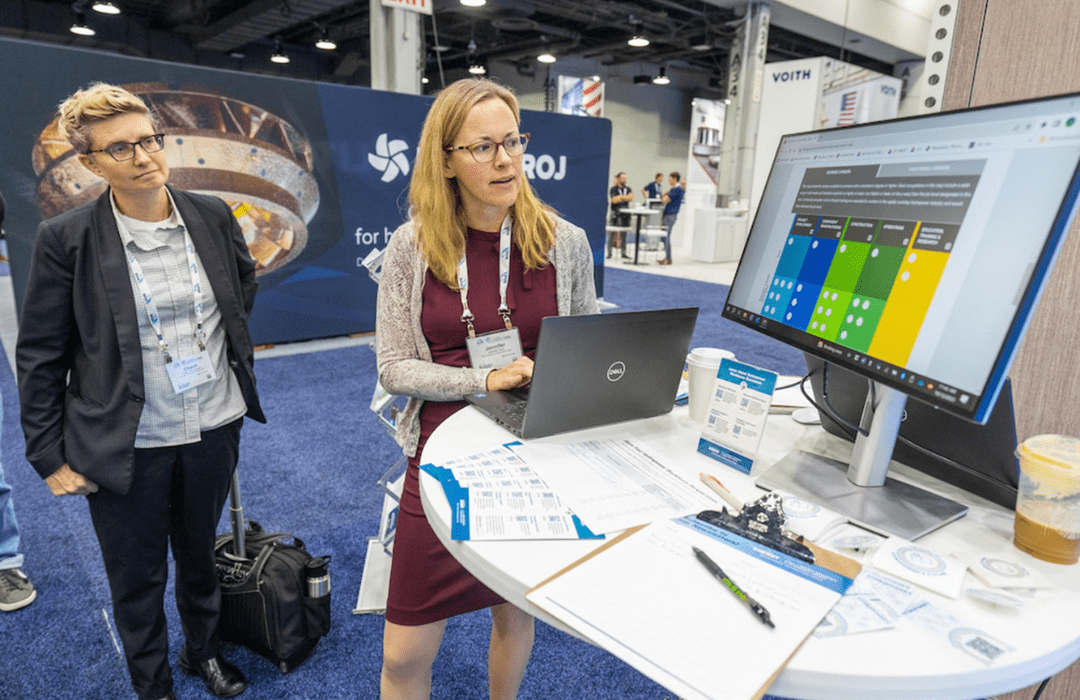A new set of hydropower and marine energy career maps have been developed by the National Renewable Energy Laboratory (NREL) and the U.S. Department of Energy’s (DOE’s) Water Power Technologies Office (WPTO). The maps were created to help future workers—current students and skilled workers looking to switch careers—easily identify pathways to a wide variety of well-paying jobs in the water power industry. The maps are part of a larger DOE project called “Map a Career in Clean Energy,” and they debuted at the National Hydropower Association’s Clean Currents conference last October.
The maps highlight the challenges in the water power workforce, especially within hydropower, as outlined in this 2022 NREL report. As the report states, more than a quarter of the domestic hydropower workforce over the age of 55 will retire in the coming decade, making it critical to build a strong workforce pipeline. That’s why creative recruitment tools are needed to attract new, diverse talent to fill jobs across many different occupations, spur innovation, and support the evolving role of hydropower in the U.S. electrical grid.
NHA members can help the clean energy transition and preserve the future of water power by sharing the resources in this article with your college alma mater and professional networks.
EXPLORING THE CAREER MAPS
While many young professionals are interested in clean energy careers, water power is often overlooked. The team at NREL and WPTO created the maps as part of a multifaceted approach that aims to generate awareness about the industry, provide teachers with easily adaptable curriculum about hydropower, and even connect jobs and job seekers.
Each map features dozens of different types of jobs available to people with diverse skills, levels of education, and backgrounds. The easy-to-read maps demonstrate the variety of hydropower and marine energy jobs that need to be filled—including welders, professors, software developers, surveyors, lawyers, modelers, environmental scientists, electricians, construction workers, instructors, civil engineers, cybersecurity specialists, and more.
“Younger generations are motivated to choose jobs that make a difference in areas like climate change and sustainability,” said Jennifer Daw, a senior researcher and group manager at NREL, who helped build the new career maps. “These maps can help raise the visibility of water power jobs and help job seekers understand how a career in water power can help them effect change.”
The hydropower and marine energy maps are part of a suite of career maps offered by DOE that focus on different clean energy technologies. They offer a dynamic view of the different but interconnected pathways people can take to land a career in water power. The maps show that seemingly unrelated skill sets and professional backgrounds (IT, communications, environmental studies, marketing, etc.) can be applied to the industry and that hydropower and marine energy are seeking workers with these transferable skills.

The National Renewable Energy Laboratory’s Jennifer Daw presented the new hydropower career map at this year’s Clean Currents conference. Photo from Werner Slocum, National Renewable Energy Laboratory
FOR MORE INFORMATION
Discover all the ways NREL’s experts are inspiring the next generation of clean energy champions, or visit their hydropower and marine energy science, technology, engineering, and mathematics (STEM) portals to discover networking and job opportunities, curricula and training materials, and day-in-the life videos.
NREL also recently launched a Renewable Energy Discovery Island web-based app, which allows its users to virtually explore hydropower and marine energy technologies—and see real-world applications of those technologies firsthand.












